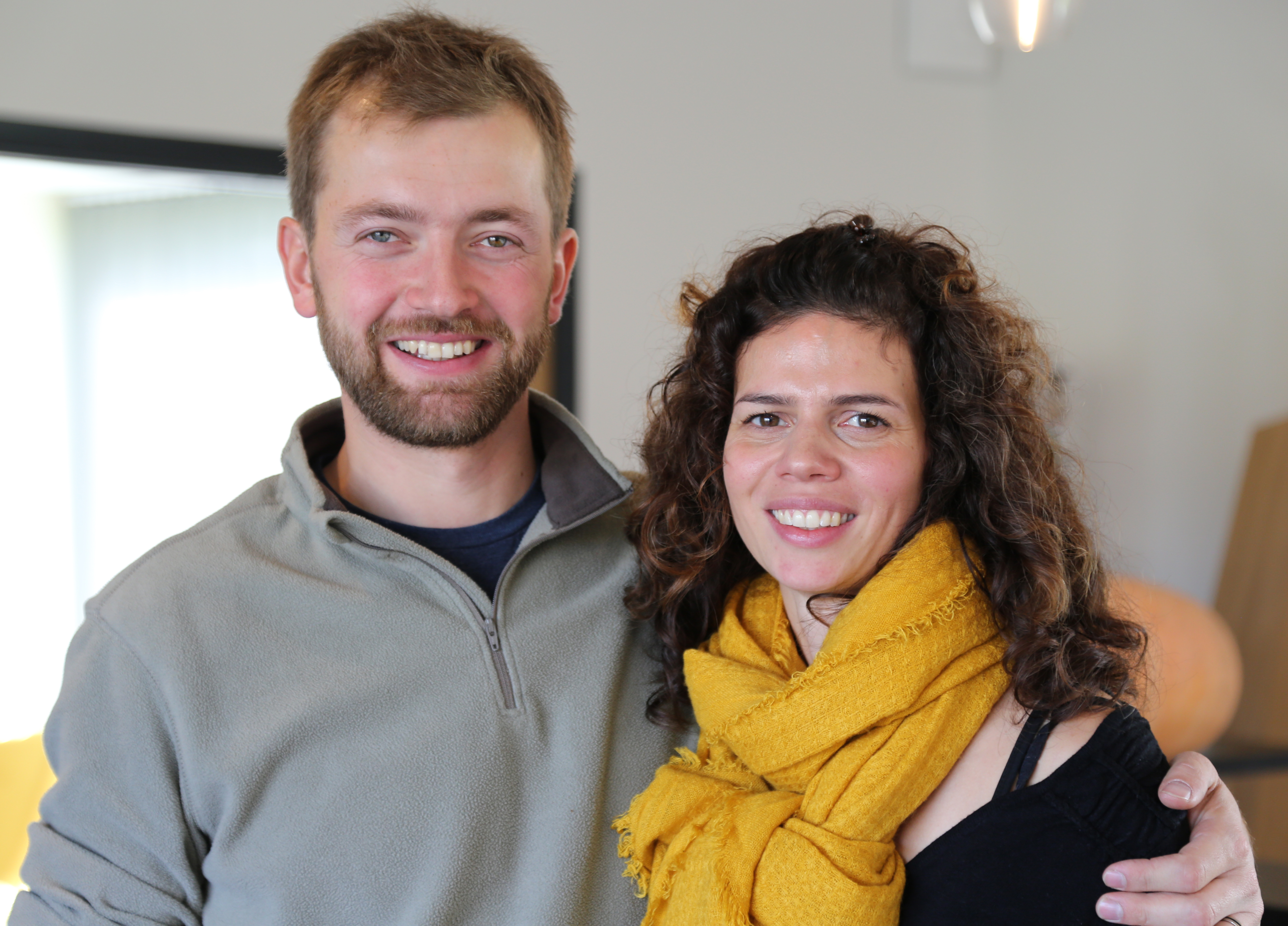It was at L’Assiette Champenoise in Reims last October when a match in the early stages of a dég menu threw up, as well it might in Champagne, a glass of something local we hadn’t heard of. It was poured, and it was good. Damn good. So good, in fact, that it was immediately followed by a bottle and a barrage of questions to the sommelier.
The wine was JmSélèque Solessence, from a third-generation grower enjoying a meteoric rise. The next day we were on our way to meet Jean-Marc and Oriane Sélèque at their state-of-the-art winery at Pierry. Suffice to say we were monumentally impressed by what we saw, with abundant evidence in the vineyard, cellar and bottle to explain why Peter Liem singled this out as “the newest rising star in the Coteaux Sud d’Épernay”. We paid another visit with an extended CellarHand contingent in March 2018 and have been bursting with excitement to present these wines ever since.
Jean-Marc Sélèque’s grandfather Henri planted his first vines in Pierry in 1965, a tradition taken up when father Richard began bottling his grower Champagne in the ‘70s. Jean-Marc himself took over duties in 2008 and began transforming this into the very model of a top-flight grower it is today. The estate has been renamed and the range redefined, while the completion of the new cellar in 2015 is a further statement of intent.
Pierry itself is a premier cru village just outside Épernay, known (and increasingly so, with Jean-Marc as flag-bearer) as prime terroir for distinguished Meunier. A further six villages within a tiny radius account for the rest of the fruit. These are: Moussy and Épernay (situated, like Pierry, on the Coteaux Sud d’Épernay); Dizy, Mardeuil and Boursault in the Vallée de la Marne; and Vertus in the Côte des Blancs. The estate has five full-time workers in the vineyard, farming nine hectares of vines across 45 plots, with an average vine age of 40 years. The balance of plantings is about 60% Chardonnay, 30% Meunier and 10% Pinot Noir. In the vineyard, you get ploughing of soil, strict pruning and cover-cropping to promote the rooting of the vine and microbial life.
The estate is run organically with the use of some biodynamic preps, though not certified as Jean-Marc reserves the right to head off a crop catastrophe if one were to arise. In the winery, sorting precedes pressing by a top-of-the-range Coquard press, followed by slow vinification. Everything is gently done and regularly checked by sight and taste. Gravity transfer and no fining or filtration are the go. Typically Jean-Marc does 70% in tank, and the rest in a mix of barrel, concrete egg and sandstone amphora. Wines in tank go through malolactic conversion, but in barrel there’s no deliberate MLF – if it happens, it happens. “My number-one focus is clean wines, so I can use as little SO2 as possible,” he says.
The cornerstone of the range is Solessence (“essence of soil”), non-vintage white and rosé blends of the three key Champagne grapes. CellarHand’s JmSélèque journey starts with these, but there’s more excitement to come in the guise of the family’s vintaged, five-parcel Blanc de Blancs (“Quintette”), vintaged single-parcel single-variety wines (Soliste) and a seven-parcel vintaged super-cuvée called Partition, among others.
Jean-Marc is a worldly winelover who marries respect for terroir with contemporary open-mindedness. He spent time making fizz in Australia and the U.S. for Chandon at the start of his Pierry quest. Jacquesson, across the way in Dizy, has since been an indelible influence. Like their CellarHand stablemates the Chiquet brothers, every step chez Jean-Marc and Oriane has been chosen at the expense of myriad alternatives rejected because they’ve been shown to yield something less than the best wine possible. Indeed, Jean-Hervé Chiquet says: “Jean-Marc is one of the future stars of Champagne, I’m convinced.”
The result here is Champagnes that are precise in their expression of fruit and soil, where autolysis quietly embellishes without dominating, and where – once you’ve shaken off the distraction of sheer pleasure and try to pick apart the elements – you find seamless harmony and elegant structure. These delicious and utterly confident wines are borne of intricately thought out practices, strictly adhered to. The wines – a million miles from any notion of stretched or contrived Champagne – are as natural, effortless and full of personality as you could wish them to be.

NV JmSélèque Solessence RRP $81
MAGNUM RRP $182 (base vintage 2013)
375ml RRP $48 (base vintage 2014)
50% Chardonnay, 40% Meunier, 10% Pinot Noir. Fruit from seven crus on mostly flinty clay on chalky subsoil : Pierry, Moussy, Épernay, Mardeuil, Dizy, Boursault, Vertus. Base vintage 2015, with 50% of the blend from wines in perpetual reserve. 80% stainless steel tank and 20% oak barrels. No fining or filtration. Disgorged in November 2017. Dosage 3g/L.
NV JmSélèque Solessence Nature RRP $96
50% Chardonnay, 40% Meunier, 10% Pinot Noir. Fruit from seven crus on mostly flinty clay on chalky subsoil: Pierry, Moussy, Épernay, Mardeuil, Dizy, Boursault, Vertus. Base vintage 2012, with 50% of the blend from wines in perpetual reserve. 80% stainless steel tank and 20% oak barrels. No fining or filtration. Disgorged in April 2017. Zero dosage.
“Based on 2012 with 50% reserve wines in the mix, this has an expressive spicy and savoury feel, with some almost peppery nuances. Smooth light pear and peach pastry on the palate. Texturally entrancing. Drink now. 93 points.” James Suckling, jamessuckling.com
NV JmSélèque Solessence Rosé RRP $96
45% Chardonnay, 40% Meunier (of which 10% skin-contact) and 15% Pinot Noir of which 5% is red wine. Fruit from seven crus on mostly flinty clay on chalky subsoil: Pierry, Moussy, Épernay, Mardeuil, Dizy, Boursault, Vertus. Base vintage 2015, with 40% of the blend from wines in perpetual reserve. 70% stainless steel tank and 30% oak barrels. No fining or filtration. Disgorged in January 2018. Dosage 4g/L.

